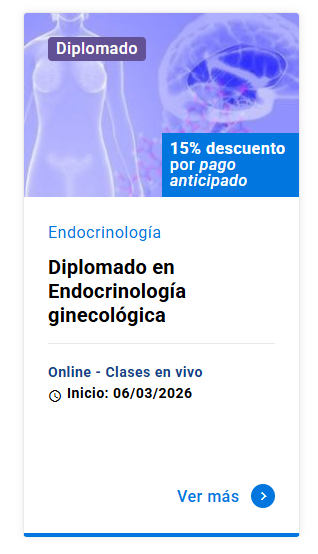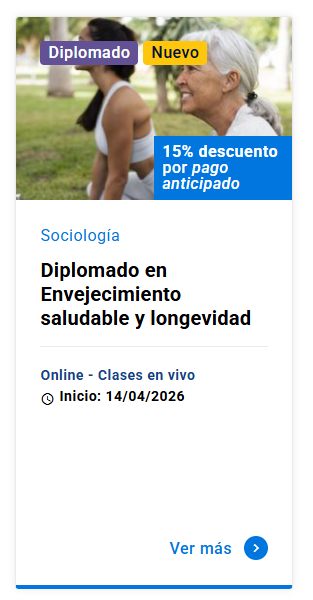Prediabetes en estudiantes de 1er año del campus Ciencias de la Salud de una universidad mexicana
DOI:
https://doi.org/10.11565/arsmed.v43i1.1022Palabras clave:
Enfermedades no transmisibles, incidencia, progresión, factores modificablesResumen
Introducción. Dado el aumento dramático de diabetes en el mundo, el objetivo de esta investigación fue analizar los valores de la glucemia en una población universitaria de nuevo ingreso para sustentar estrategias de detección y manejo preventivo de prediabetes y diabetes. Métodos. Estudio observacional, analítico, transversal, no probabilístico. Se analizaron los valores de glucemia en ayunas de 367 estudiantes de nuevo ingreso en 2011, y 430 en 2016 al campus de Ciencias de la Salud de una universidad del sureste de México. Se aplicaron pruebas de tendencia central, comparaciones y proyecciones. Resultados. En la muestra de 2011 hubo prevalencia de 11% de mujeres y 12,4% de hombres con glucemia en valores de prediabetes. En la de 2016, hubo 30,3% de mujeres y 40% en prediabetes. Hubo diferencia de los promedios de glucemia entre ambas muestras de 5,4 mg/dL (0,3 mmol/L) en mujeres, t = - 4,582 (p = 0,0001) y 10,81 mg/dL (0,6 mmol/L) en hombres, t = - 6,428 (p = 0,0001). No se encontró correlación con masa corporal. Conclusiones. En la muestra de 2016 hubo incremento en la prevalencia de prediabetes y de adultos jóvenes en riesgo de desarrollar diabetes mellitus de tipo 2, por lo que es necesario desarrollar estrategias para mejorar el estilo de vida.
Descargas
Citas
ADA. (2017, a). So... Do I have prediabetes? American Diabetes Association. Consultado el 15 de diciembre de 2017 en https://doihaveprediabetes.org/?loc=dorg_201707_en_feat_adcouncil
ADA. (2017, b). El diagnóstico de la diabetes e información sobre la prediabetes. American Diabetes Association. Consultado el 12 de enero de 2018 en http://www.diabetes.org/es/informacion-basica-de-la-diabetes/diagnstico.html
Baena M, Sangüesa G, Dávalos A, Latasa MJ, Sala-Vila A, Sánchez RM, & Alegret M. (2016). Fructose, but not glucose, impairs insulin signaling in the three major insulin-sensitive tissues. Scientific Reports 6, 26149. doi: 10.1038/srep26149. DOI: https://doi.org/10.1038/srep26149
Basaranoglu M, Basaranoglu G, Sabuncu T, Sentürk H. Basaranoglu, & M. (2013). Fructose as a key player in the development of fatty liver disease. World Journal of Gastroenterology 19(8), 1166-1172. doi: 10.3748/wjg.v19.i8.1166 DOI: https://doi.org/10.3748/wjg.v19.i8.1166
Boyle JP, Thompson TJ, Gregg EW, Barker LE, & Williamson DF. (2010), Projection of the year 2050 burden of diabetes in the US adult population: dynamic modeling of incidence, mortality, and prediabetes prevalence. Population Health Metrics 8(1), 29. doi: 10.1186/1478-7954-8-29. DOI: https://doi.org/10.1186/1478-7954-8-29
CSG. (2012). Guía de la Práctica Clínica Prevención, diagnóstico y tratamiento del sobrepeso y la obesidad (GPC IMSS-046-08, 2012). México, Consejo de Salubridad General, Secretaría de Salud. Consultado el 12 de enero de 2018 en http://www.cenetec.salud.gob.mx/descargas/gpc/CatalogoMaestro/046_GPC_ObesidadAdulto/IMSS_046_08_EyR.pdf
Danaei G, Finucane MM, Lu Y, Singh GM, Cowan MJ, & Paciorek C. (2011). National, regional, and global trends in fasting plasma glucose and diabetes prevalence since 1980: systematic analysis of health examination surveys and epidemiological studies with 370 country-years and 27 million participants. The Lancet 378 (9785) 31-40. doi: 10.1016/S0140-6736(11)60679-X. DOI: https://doi.org/10.1016/S0140-6736(11)60679-X
Eisenberg DM, & Burgess JD. (2015). Nutrition education in an era of global obesity and diabetes: Thinking outside the box. Academic Medicine 90(7), 854-860. doi: 10.1097/ACM.0000000000000682. DOI: https://doi.org/10.1097/ACM.0000000000000682
Eng M. (2015). Cooking up change in American schools. Consultado el 15 de diciembre de 2017 en https://healthyschoolscampaign.org/programs/national/cooking-up-change-national/
Escalante EM, Cerda EM, Morales JM et al. (2009). Prevalencia de prediabetes en jóvenes aspirantes a la Universidad Autónoma de San Luis Potosí. Bioquimia 34(1), 126. http://www.redalyc.org/pdf/576/57613001117.pdf
Fagot-Campagna A. (2000). Emergence of type 2 diabetes mellitus in children: epidemiological evidence. Journal of Pediatric Endocrinology and Metabolism 13(Suppl), 1395-1402. doi: https://doi.org/10.1515/jpem-2000-s613 DOI: https://doi.org/10.1515/jpem-2000-s613
Farzadfar F, Finucane MM, Danaei G, Pelizzari PM, Cowan MJ, Paciorek CJ, & Ezzati M. (2011). National, regional, and global trends in serum total cholesterol since 1980: systematic analysis of health examination surveys and epidemiological studies with 321 country-years and 3.0 million participants. The Lancet 377(9765), 578-586. doi: 10.1016/S0140-6736(10)62038-7 DOI: https://doi.org/10.1016/S0140-6736(10)62038-7
Goran MI, Dumke K, Bouret SG, Kayser B, Walker RW, & Blumberg B. (2013). The obesogenic effect of high fructose exposure during early development. Nature Reviews Endocrinology 9(8), 494-500. doi: 10.1038/nrendo.2013.108 DOI: https://doi.org/10.1038/nrendo.2013.108
Herencia K, Hernández M, & Moreno J. (2015). Determinación de la resistencia a la insulina en jóvenes adultos con incremento en su peso corporal en una facultad pública de medicina. Revista Médica Panacea 5(1), 4-10. http://108.160.150.69/~revpanacea/index.php/RMP/article/view/105/102
Johnson RJ, Perez-Pozo SE, Sautin Y, Manitius J, Sanchez-Lozada LG, Feig DI, & Roncal C. (2009). Hypothesis: could excessive fructose intake and uric acid cause type 2 diabetes? Endocrine Reviews 30 (1) 96-116. doi: 10.1210/er.2008-0033 DOI: https://doi.org/10.1210/er.2008-0033
Johnson RJ, Nakagawa T, Sanchez-Lozada LG, Shafiu M, Sundaram S, Le M, & Lanaspa MA. (2013). Sugar, uric acid, and the etiology of diabetes and obesity. Diabetes 62 (10) 3307-3315. doi: 10.2337/db12-1814. DOI: https://doi.org/10.2337/db12-1814
King H, Aubert RE, & Herman WH. (1998). Global burden of diabetes, 1995–2025: prevalence, numerical estimates, and projections. Diabetes Care 21(9) 1414-1431. https://doi.org/10.2337/diacare.21.9.1414 DOI: https://doi.org/10.2337/diacare.21.9.1414
Lean MEJ, Leslie WS, Barnes AC, Brosnahan N, Thom G, McCombie L, & Rodrigues AM. (2017). Primary care-led weight management for remission of type 2 diabetes (DiRECT): an open-label, cluster-randomised trial. The Lancet http://dx.doi.org/10.1016/S0140-6736(17)33102-1 DOI: https://doi.org/10.1016/S0140-6736(17)33102-1
Lehto S, Niskanen L, Rönnemaa T, & Laakso M. (1998). Serum uric acid is a strong predictor of stroke in patients with non–insulin-dependent diabetes mellitus. Stroke 29 (3), 635-639. https://doi.org/10.1161/01.STR.29.3.635 DOI: https://doi.org/10.1161/01.STR.29.3.635
Ley General de Salud. (2016). Consultado el 25 de enero de 2018 en http://www.cofepris.gob.mx/MJ/Documents/Leyes/lgs.pdf
Lim JS, Mietus-Snyder M, Valente A, Schwarz JM, & Lustig RH. (2010). The role of fructose in the pathogenesis of NAFLD and the metabolic syndrome. Nature Reviews Gastroenterology and Hepatology 7 (5) 251-264. doi: 10.1038/nrgastro.2010.41 DOI: https://doi.org/10.1038/nrgastro.2010.41
Ludwig DS, & Ebbeling CB. (2001). Type 2 diabetes mellitus in children: primary care and public health considerations. JAMA. 286 (12) 1427-1430. doi:10.1001/jama.286.12.1427 DOI: https://doi.org/10.1001/jama.286.12.1427
Mendoza EY, Zavala V, Sánchez MV, López-Correa SM, & Carranza J. (2016). Detección de diabetes mellitus en adolescentes con sobrepeso y obesidad. Medicina Interna de México 32(1) 9-13. http://www.medigraphic.com/pdfs/medintmex/mim-2016/mim161c.pdf
Morales G, Guillén F, Muñoz S, Belmar C, Schifferli I, Muñoz A, & Soto A. (2017). Factores de riesgo cardiovascular en universitarios de primer y tercer año. Revista Médica de Chile. 145 (3) 299-308. http://dx.doi.org/10.4067/S0034-98872017000300003 DOI: https://doi.org/10.4067/S0034-98872017000300003
Muñoz JM, Córdova J, Mayo H, & Boldo X. (2013). Prediabetes y diabetes sin asociación con obesidad en jóvenes mexicanos. Archivos Latinoamericanos de Nutrición, 63 (2) 148-156. https://www.alanrevista.org/ediciones/2013/2/art-6/
Muñoz JM, Córdova JA, & del Valle D. (2015). The healthy eating index of new students at an university of Mexico. Nutrición Hospitalaria. 31(4) 1582-1588. doi: 10.3305/nh.2015.31.4.8401.
Muñoz JM, Córdova JA, & del Valle D. (2016a). Sub-patterns of food consumption and hyperglycemia in Mexican young people: a study by factor analysis. Food and Nutrition Research 60 (1) 30185. doi: 10.3402/fnr.v60.30185 DOI: https://doi.org/10.3402/fnr.v60.30185
Muñoz JM, Córdova JA, Boldo X, & del Valle D. (2016b). HOMA-IR anomalies and sugar consumption in young with euglycemia. Pakistan Journal of Nutrition, 15 (1) 52-57. doi: 10.3923/pjn.2016.52.57 DOI: https://doi.org/10.3923/pjn.2016.52.57
Nomura K, & Yamanouchi T. (2012). The role of fructose-enriched diets in mechanisms of nonalcoholic fatty liver disease. The Journal of Nutritional Biochemistry, 3 (23) 203-208. doi: 10.1016/j.jnutbio.2011.09.006 DOI: https://doi.org/10.1016/j.jnutbio.2011.09.006
Nakanishi N, Okamoto M, Yoshida H, Matsuo Y, Suzuki K, & Tatara K. (2003). Serum uric acid and risk for development of hypertension and impaired fasting glucose or Type II diabetes in Japanese male office workers. European Journal of Epidemiology, 18 (6) 523-530. https://link.springer.com/article/10.1023/A:1024600905574 DOI: https://doi.org/10.1023/A:1024600905574
PAHO. (2017). Health in the Americas, 2017 Edition. Summary: Regional Outlook and Country Profiles. Washington, D.C.: Pan American Health Organization. http://iris.paho.org/xmlui/handle/123456789/34321
Phillips LS, Ratner RE, Buse JB, & Kahn SE. (2014). We can change the natural history of type 2 diabetes. Diabetes Care. 37 (10) 2668-2676. https://doi.org/10.2337/dc14-0817 DOI: https://doi.org/10.2337/dc14-0817
Prescott SL, & Logan AC. (2017). Each meal matters in the exposome: Biological and community considerations in fast-food-socioeconomic associations. Economics & Human Biology. 27 (Pt B) 328-335. doi: 10.1016/j.ehb.2017.09.004 DOI: https://doi.org/10.1016/j.ehb.2017.09.004
Rentfro AR, Nino JC, Pones RM, Innis-Whitehouse W, Barroso CS, & Rahbar MH. (2011). Adiposity, Biological Markers of Disease, and Insulin Resistance in Mexican American Adolescents, 2004-2005. Preventing Chronic Diseases 8 (2) A40. https://www.ncbi.nlm.nih.gov/pmc/articles/PMC3073433/
Rodrigo S, Rodríguez L, Otero P, Panadero MI, García A, Barbas C, & Ãlvarezâ€Millán JJ. (2016). Fructose during pregnancy provoques fetal oxidative stress: The key role of the placental heme oxigenase-1. Molecular Nutrition & Food Research. 60 (12) 2700-2711. doi: 10.1002/mnfr.201600193 DOI: https://doi.org/10.1002/mnfr.201600193
Tabung FK, Liu L, Wang W, Fung TT, Wu K, Smith-Warner SA et al. (2018). Association of dietary inflammatory potential with colorectal cancer risk in men and women. JAMA Oncology. doi:10.1001/jamaoncol.2017.4844 DOI: https://doi.org/10.1001/jamaoncol.2017.4844
Salinas J, González CG, Fretes G, Montenegro E, & Vio del RF. (2014). Bases teóricas y metodológicas para un programa de educación en alimentación saludable en escuelas. Revista Chilena de Nutrición. 41(4) 343-350. http://dx.doi.org/10.4067/S0717-75182014000400001 DOI: https://doi.org/10.4067/S0717-75182014000400001
Spranger J, Kroke A, Möhlig M, Hoffmann K, Bergmann MM, Ristow M, & Pfeiffer AF. (2003). Inflammatory cytokines and the risk to develop type 2 diabetes. Diabetes, 52 (3), 812-817. https://doi.org/10.2337/diabetes.52.3.812 DOI: https://doi.org/10.2337/diabetes.52.3.812
Su Q, Sud N, & Pan K. (2017). MicroRNAs in the pathogenesis of lipogenic diet induced hyperlipidemia and insulin resistance. The FASEB Journal, 31(1 Supplement), 99, 8. http://www.fasebj.org/content/31/1_Supplement/299.8 DOI: https://doi.org/10.1096/fasebj.31.1_supplement.299.8
Sud N, Zhang H, Pan K, Cheng X, Cui J, & Su Q. (2017). Aberrant expression of microRNA induced by high-fructose diet: implications in the pathogenesis of hyperlipidemia. The Journal of Nutritional Biochemistry. 43, 125-131. doi: 10.1016/j.jnutbio.2017.02.003 DOI: https://doi.org/10.1016/j.jnutbio.2017.02.003
Wang T, Heianza Y, Sun D, Huang T, Ma W, Rimm EB, Manson JA, Hu FB, Willet WC, & Qi L. (2018). Improving adherence to healthy dietary patterns, genetic risk, and long term weight gain: gene-diet interaction analysis in two prospective cohort studies. British Medical Journal, 360: j5644. doi: https://doi.org/10.1136/bmj.j5644 DOI: https://doi.org/10.1136/bmj.j5644
Wynn K, Trudeau JD, Taunton K, Gowans M, & Scott I. (2010). Nutrition in primary care. Current practices, attitudes, and barriers. Canadian Family Physician. 56 (3), e109–e116. http://www.cfp.ca/content/cfp/56/3/e109.full.pdf
Xu H, Sjögren P, Ärnlöv J, Banerjee T, Cederholm T, Risérus U, Lindholm B, Lind L, & Carrero JJ. (2015). A proinflammatory diet is associated with systemic inflammation and reduced kidney function in elderly adults. Journal of Nutrition, 145(4), 729-735. doi: 10.3945/jn.114.205187. DOI: https://doi.org/10.3945/jn.114.205187
Descargas
Publicado
Cómo citar
Licencia
Derechos de autor 2018 ARS MEDICA Revista de Ciencias Médicas

Esta obra está bajo una licencia internacional Creative Commons Atribución-CompartirIgual 4.0.
Los autores/as conservan sus derechos de autor y garantizan a la revista el derecho de primera publicación de su obra, la que estará simultáneamente sujeta a la Licencia CC BY-SA 4.0 (Ver declaración de Acceso Abierto).







